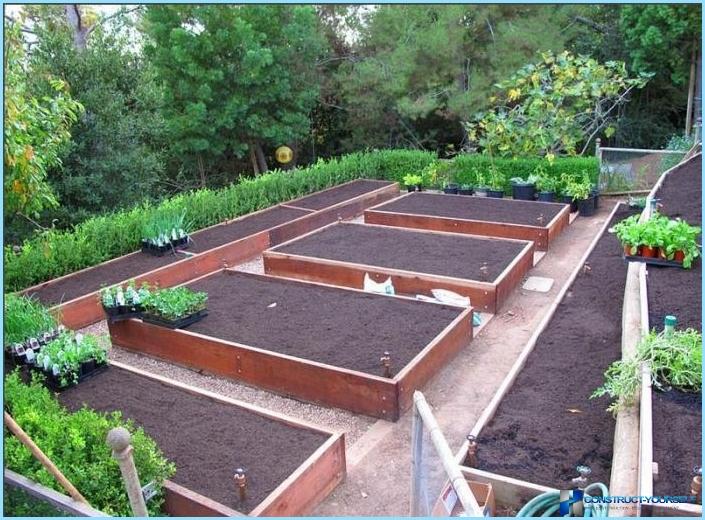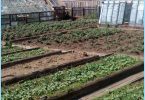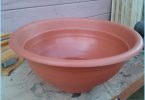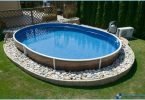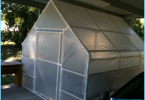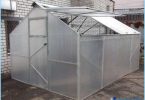The contents
To care for a vegetable garden always leave a lot of time and effort. You need to handle a large plot of land, although its essential part is not even used for growing vegetables. Regular digging, weeding and protection against underground pests, these regular problems are routine for the average gardener. However, alternatively, use high beds, which allow you to save the owner from these problems
Description and construction ↑
High beds are small elevation for growing vegetables and herbs. On the perimeter they are protected with walls, so the total ground level is slightly higher than in the garden. Design of such elements is special in that it has several layers. They not only contribute to the fertilization of soil and plant growth, but also limit the access of parasites to the roots.
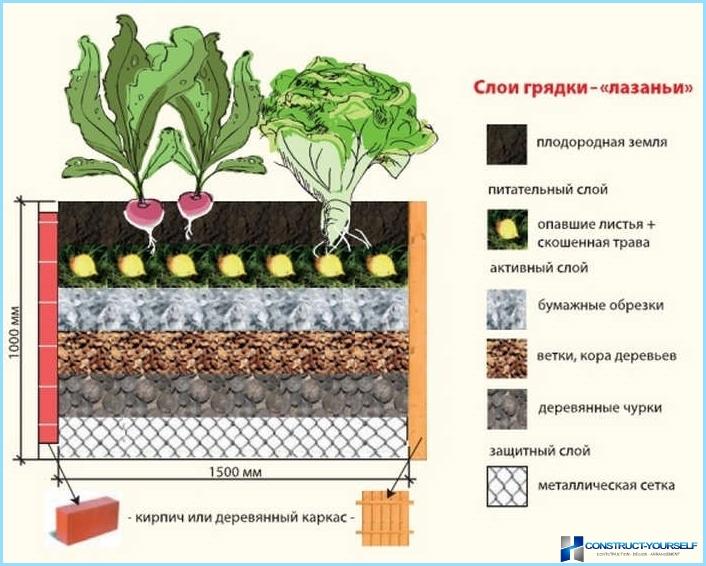
The design consists of several layers, therefore it is sometimes called lasagna. As seen in the photo, among them a few are used for power plants. Just say five layers:
- Wood chocks;
- The branches and bark of trees;
- Paper;
- The leaves and grass;
- Earth.
Also note another layer of metal network, but it plays no role in plant nutrition and is required only for protection. The presence of the grid prevents the access of pests to the ground, protecting the roots.
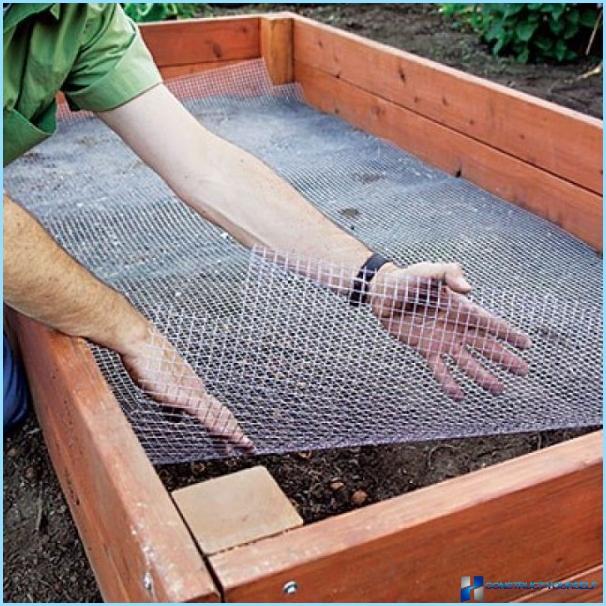
The fertile land is used only for the upper filling of the beds. It gets the plant itself, which in the future develops, increases in size and pushes out layers of roots in this layer. The combination of leaves and grass is a nutritious layer that is required to supply plant roots with nutrients. Next come poluzaschite components like bark, chocks, and paper scraps. They need to exchange substances with the surrounding earth, and to filter moisture.
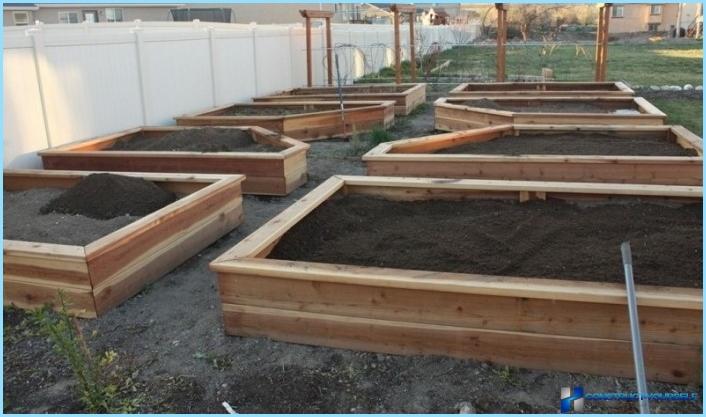
All of these components are limited to the beds on the sides of the brick or wooden frame. This design provides the plant with a full range of nutrients and contributes to its accelerated growth. And the security here is extremely high, enabling the use of high beds with an abundance of pests.
The advantages of such a garden, ↑
The ease of use of the beds made them very popular decision. They are practical, simple and reliable, and care for them is minimal. Although the process of their creation is very simple, it saves a lot of effort and money, which in future could go to the care of an ordinary garden.
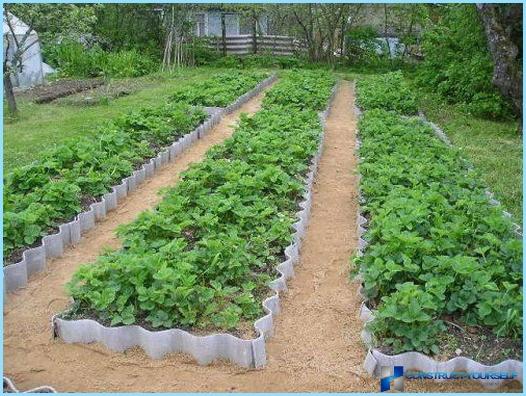
Among the main advantages of a high ridge is worth noting:
- Easy removal of weeds;
- Simple navigation and layout of the beds;
- Simple protection from frost and parasites;
- The accelerated growth of plants.
On a high bed is much more convenient to remove various weeds. The reason for this is not only a high location, but the loose soil. For this there is no need to use special tools, enough to take the gloves and hands.
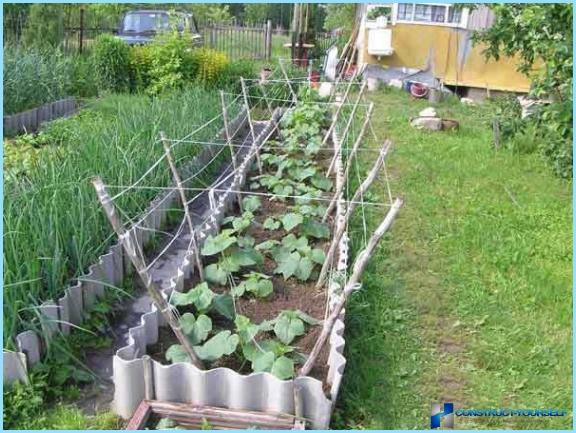
Navigation and layout is greatly simplified, because the spaces are already divided into blocks. This allows you to plant plants in different season, it is easy to share and tag them. In addition, the design provides the ability to cover with a tarp or other material. It helps to cover the young plants from too much sun, or create a makeshift greenhouse during the cold weather.
In such conditions plant growth is substantially accelerated. The presence of fertilizers, loose soil, and the absence of parasites contribute to more robust growth of seedlings. The advantage is the protection against underground insects that affect the roots.
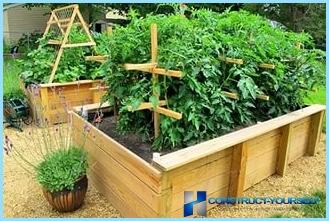
It is also worth noting that such a planting can be done even where the land is altogether unfit for growing plants. The installation of such structures is not dependent on the underlying soil for further work you can use purchased soil. This allows you to not worry about the composition of earth, stones and other debris.
Weeding for such sites is also not required. Easy loosening of the soil can easily replace it. The same applies to the preliminary digging. Therefore, such regular treatments are no longer needed, which saves a lot of time and effort. In addition, if you need a high bed can be disassembled back to the original view of the garden.
Disadvantages high beds ↑
However, there are also disadvantages to this method of planting. It is not used widely, because in certain situations it is extremely uncomfortable. Among the major disadvantages worth noting:
- The drying of the soil;
- The need for regular feeding;
- Favorable conditions for the development of harmful for plants microflora.
- The construction of the garden beds takes time and effort;
- Not recommended for growing cold-resistant crops.
The first drawback is the drying of the soil. Since the construction is located on top and has drainage holes for ventilation, is fast drying and weathering of the soil. This leads to the need regular watering and more frequent fertilizing plants.
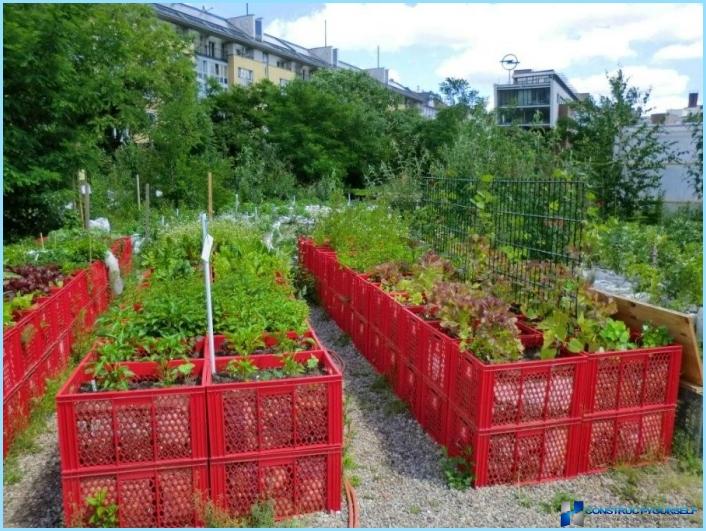
Fertilizer — another drawback. Plants are unable to draw nutrients from the surrounding land, therefore, forced to confine the nutritive layer of high beds. This leads to the fact that for continued growth they need additional dressing.
This greatly simplifies the care of a high bed, so it is recommended everywhere. Also these problems can be overcome deepening the garden soil.
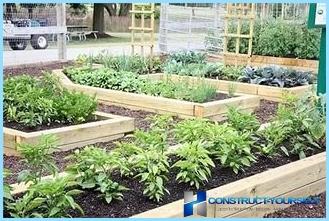
As for the beds used remains of trees, leaves and grass, then these conditions are quite suitable for development of various fungi. It could destroy a plant with root completely by removing the entire crop. Therefore, for such a thing, too, is to follow, focusing on the health of the seedlings.
Another problem when using this kind of beds is the rapid heating of the soil. Although it contributes to better development of many plants, it is harmful for cold-resistant crops. If such a culture is subjected to overheating, it may zastrelitsia.
These were the main shortcomings of high beds. With them can be a problem in the process of building, however, all the previously mentioned benefits more than cover such deficiencies. And it’s better to assess the feasibility of such beds in your garden.
What materials are used for high beds ↑
For high beds can be used various materials. Their diversity is not limited to brick or wood, it is not so important. They are used only as an enclosure, so I can perform a purely decorative role.
Among the most common options for these beds:
- Wood;
- Vine;
- Brick and stone;
- Metal;
- Plastic;
- Slate;
- Concrete.
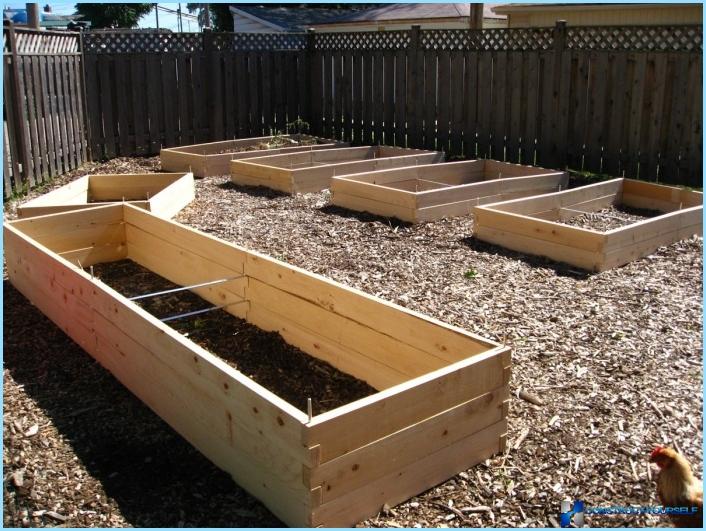
As you can see, the choice is really big. Many recommend to go for the tree, because it is the easiest and most convenient option for high beds. However, it must be treated against parasites, excessive moisture and other problems, so many people prefer more reliable options
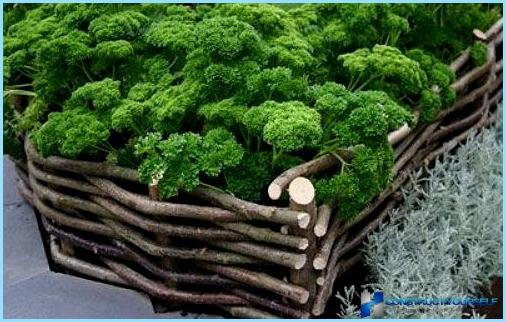
The alternative would be vine. It has a nice appearance and can be easily replaced with aging. The disadvantage is the very small lifetime of the beds, often up to one year.
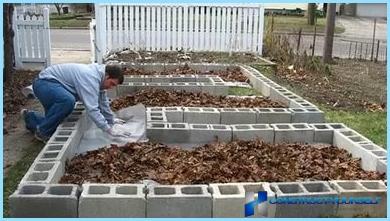
Next is brick and stone. These durable materials are often used for ornamental plants, but in the garden they can also be placed. They are durable and reliable, it does not change its form in the process of operation. But their construction requires special skills, a lot of time and effort. In addition, further dismantling high beds is significantly complicated.
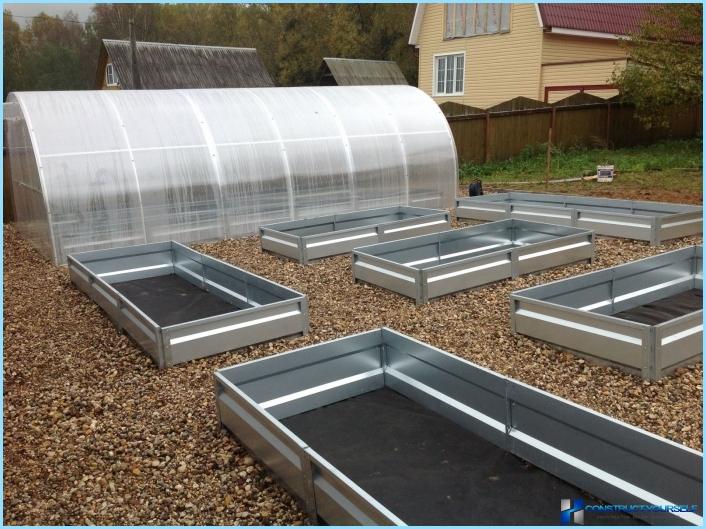
Metal is a good option for high beds. It is convenient, simple and durable. If necessary, it can be easily moved to another place, because a thin layer of metal is easy. However, it has disadvantages, among which the need for welding, surface treatment against corrosion.
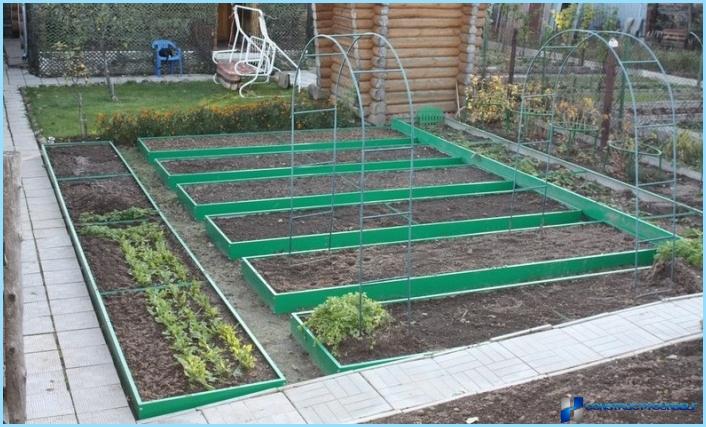
Plastic is a good choice for the replacement of wood or metal. It is lightweight, comfortable, and its durability is quite high. A particular advantage is that plastic is almost indestructible in chemical terms, therefore, can serve for a long time.
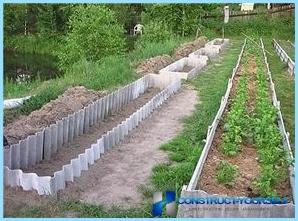
Concrete and slate are the most simple and practical solutions to the beds. They are reliable, require low costs and their lifespan measured in years. However, slate is quite fragile, and concrete requires a long installation time.
All of these materials are used for decorating the high beds. They are practical, but each of them has its own advantages and disadvantages. It should be considered at future choice.
How to make high beds ↑
The process of construction of high raised beds are quite simple. It is only necessary to understand the General design idea and to act in accordance with it. For example, will be dismantled wooden bed, because the wood work is much easier.
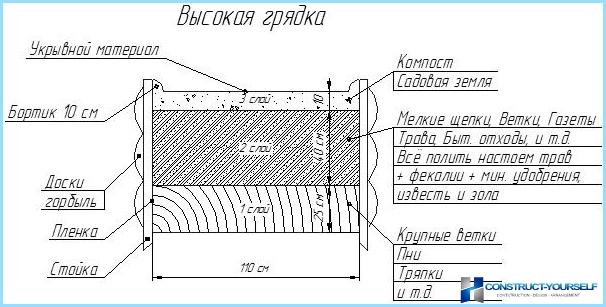
To work you need the following items:
- Shovel;
- Drill;
- Roulette;
- Saw;
- Level;
- Screws;
- Primer;
- Construction mesh.
Wood also need to two types. This Board 50/200 mm timber 50×50 mm. Work is carried out in several stages, including:
- Manufacture of wood.
- Site selection and preparation.
- Frame Assembly.
- Installation.
- Filling.
The first step is to treat the wood. Pre-cut it, work on impregnation and drying of the material. The wood is cut in accordance with the future size high beds.
A length of high garden beds it is recommended to do about 3 metres and the height to 30 centimeters. The width should be equal to the meter.
Cut the Board in accordance with the preliminary layout, you need to register them with antiseptic. Special attention should be paid to the party who will be in contact with the ground. After that, the material need to be dried.
The site for the beds should be quite bright and not contain perennial plants. It is recommended to dig the ground to make it leak. In the process removed various debris like rocks and branches.
Then begins the process of assembling high beds. The Board slipping to the walls, connecting through the lumber. After completion of the work recommended again to ground the design. Then she set on the future and fixed by wooden stakes. Locking is needed only now, in the future, the framework will adhere to the primer.
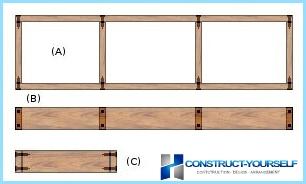
Further, the bottom of the garden is laid building a grid, you need to securely fasten the perimeter of the frame. This will protect the plant from major pests. Thereafter, the filling according to the plan:
- Wood chips;
- Small branches and leaves;
- Scraps of paper;
- A pile of manure warming layer;
- Fertile land.
Instead of twigs and shavings can be placed any additional layer of fertilizers for plants, however, it is important to install protective barrier for the garden. They can be as a natural component and geotextile.
The result was only to put plants in the bed and grow them. You need to remember about regular care and watering, because such constructions are particularly sensitive to this.
These tips will make it easy to do a nice high bed for a vegetable garden. Plants will quickly grow and give a good harvest. For a better understanding of construction of high raised beds, it is recommended to watch the following video:

